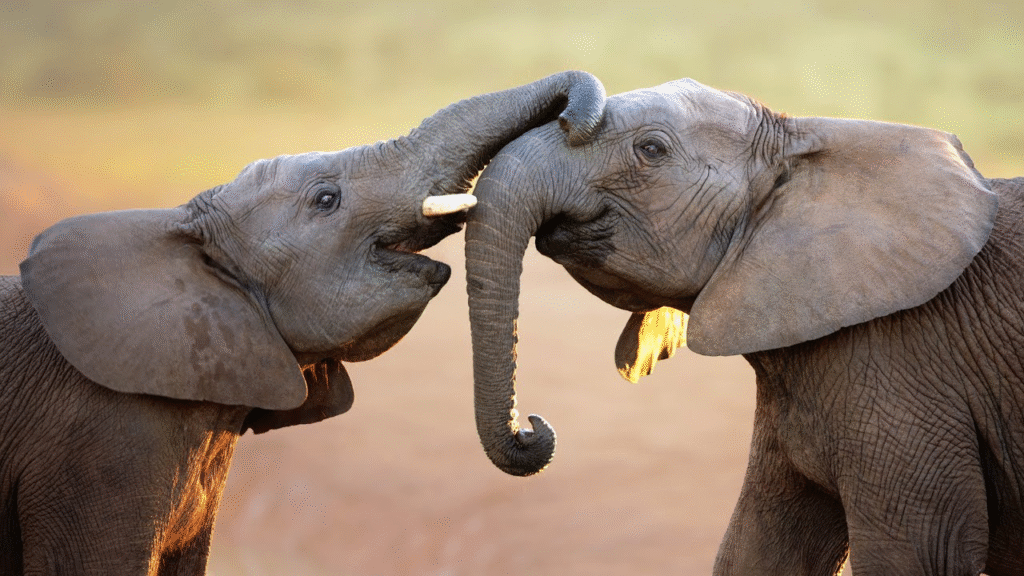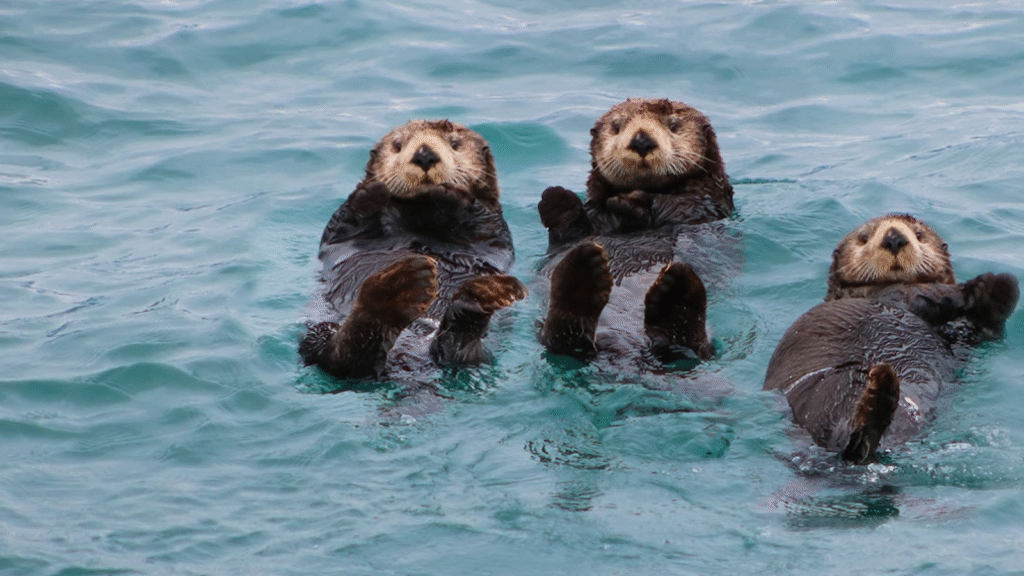10 Amazing Animal Facts for Kids
Here are 10 Amazing Animal Facts for kids behaviors and traits that show just how remarkable our fellow creatures can be. From clever raccoons dipping their paws to sensitive sea otters holding hands, each example reveals a small but meaningful way animals connect with their world. Read on to discover these unique habits and the simple science behind them.
1. Raccoon: Tiny “Wash Hands” Trick

Raccoons often dip their food in water before eating, almost like they are washing it. If you watch a raccoon by a stream, you’ll see it scoop something up with its front paws, dunk it, and move it around. Even when there’s no water, they pretend to rinse their meal anyway. Scientists learned this happens because watery paws wake up sensitive nerves on their fingertips. That wet feeling helps them sense and hold onto slippery snacks better. On dry land, that same dunking motion just gives them a firmer grip when munching.
2. Dog: The Relaxed “Play Face”

When a dog feels happy and safe, its mouth often falls open in a loose, relaxed way people call this the “play face.” You might spot a dog with its tongue hanging out, teeth showing just a bit, and eyes bright. Researchers found that dogs making this expression get more pats, belly rubs, and praise from their owners. In other words, when a dog’s mouth softens into that gentle grin, it’s saying, “I feel good here” and humans usually respond by giving extra love.
3. African Elephant: Trunk Hugs

African elephants live in tight-knit family groups led by older females. If one elephant feels upset maybe it got stuck in mud or lost a calf others come close to comfort it. They’ll drape a trunk over its back, gently touch its cheek, or stand so close their sides press together. In national parks, rangers have watched elephants clear dirt away from stuck calves and guide older members who can’t keep up. Those trunk-to-body touches seem to calm everyone involved, boosting feel-good hormones and reminding us how important gentle support can be.
4. Quokka: Forever Smiling

Quokkas are small marsupials that live on a few islands off Western Australia. Their faces are naturally shaped so their lips curve upward, giving the impression of a grin even when they’re simply nibbling grass. Tourists love taking selfies with quokkas because that “smile” makes them look friendly and happy. While quokkas aren’t actually feeling human-style joy every minute, seeing their faces can lift anyone’s spirits. It’s like nature’s own mood-booster.
5. Scarlet Macaw: Learning to Talk

Scarlet macaws have bright red, yellow, and blue feathers that catch your eye, but they are also gifted at picking up human words. In bird rescue centers, people spend time talking to macaws repeating names, common phrases, and sounds. In just a couple of months, many macaws learn up to fifty words. When a parrot calls its owner by name, it’s not just random mimicry it shows the bird made a clear link between that sound and a person. This kind of talking helps macaws bond with their humans and keeps their minds busy.
6. Black-tailed Prairie Dog: Quick “Kisses” for News

On the open grasslands of North America, black-tailed prairie dogs live together in huge underground towns. When two prairie dogs emerge, they often touch noses or press their lips together for a moment what looks like a quick kiss. Through that brief contact, they swap scents that share news: “I found food over here,” or “I saw a hawk close by.” Studies show that prairie dogs who exchange these “kisses” more often have stronger friendships and better chances of staying safe.
7. Hummingbird: Remembering Friendly Faces

Ruby-throated hummingbirds zip around backyard feeders at lightning speed, sipping sweet nectar. Scientists discovered that these tiny birds learn to recognize the person who fills their feeder. If you’re the one who refills the sugar water, a hummingbird won’t zoom away when you step outside. Instead, it may hover just a few inches from your hand, as if to say, “Thanks for the snack!” Remembering a human face makes hummingbirds’ long migrations and busy days a bit easier they don’t waste energy darting away when they know you’re kind.
8. Bottlenose Dolphin: Whistles That Work Like Names

Bottlenose dolphins live in social groups called pods, and each dolphin develops its own unique whistle in its first year essentially its name. If a dolphin wants to call out to a friend, it uses that friend’s specific whistle. In experiments, researchers played a recorded whistle to a dolphin, and the dolphin answered back with its own signature whistle like hearing your name in a crowd and turning to respond. These name-like whistles help dolphins stay connected, coordinate hunts, and care for each other across the wide-open seas.
9. Domestic Goat: Goat “Laughs”

If you gently scratch a goat under its chin or behind its ears, you might hear a funny bleat that sounds like laughter. Scientists noticed that goats make this “bleat-laugh” when they’re being petted in areas they love. Their hearts slow, their bodies relax, and they lean into your hand as if begging for more. Farmers say goats who get plenty of friendly attention grow healthier and friendlier. It’s proof that positive touch really matters and that even goats can show clear signs of pleasure.
10. Sea Otter: Kelp Naps

Sea otters often float on their backs in groups called rafts. To keep from drifting apart, they wrap themselves in strands of kelp or hold onto each other’s paws. In Alaska, scientists noticed that otters in rafts of five or more pups stayed together better during storms. Even while snoozing, otters stay alert ready to dive for clams or swim away if a predator appears. Watching a raft of otters doze together is like seeing a cozy floating blanket of fur, each one quietly supporting its neighbors.







